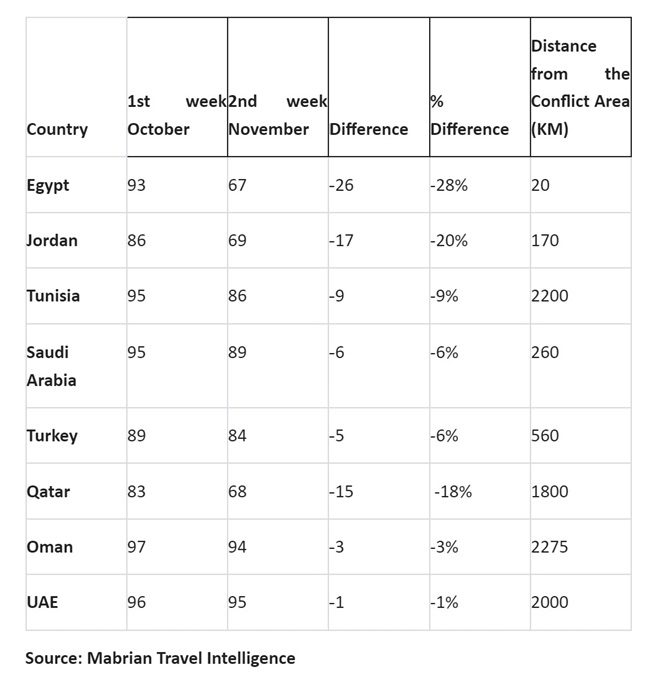 In the Shadows of Conflict: Mabrian’s Study Unveils How the Israel/Gaza Tensions Echo Across the Tourism Sector.
In the Shadows of Conflict: Mabrian’s Study Unveils How the Israel/Gaza Tensions Echo Across the Tourism Sector.
In an insightful revelation by Mabrian Technologies, a pioneering force in Travel Intelligence, the ripples of the Israel/Gaza conflict are found to extend far beyond their immediate vicinity, influencing the tourism sector up to 2,000 kilometres away. The study, encapsulated in the Security Perception Index, offers a unique lens into how geopolitical tensions can sway the global travel landscape.
Carlos Cendra, the Chief Marketing Officer of Mabrian, elucidates the broader implications of regional conflicts on travel dynamics. According to Cendra, “Travel is invariably the first to bear the impact of regional tensions. Our Security Perception Index, crucial for gauging tourist destinations’ attractiveness, starkly reflects this reality.”
The Index, a proprietary analytical tool of Mabrian, harnesses Artificial Intelligence, particularly Natural Language Processing, to gauge the confidence of visitors and potential travellers based on their social media interactions. This innovative approach provides an unvarnished view of tourist sentiments and destination safety perceptions.
The recent study highlights a discernible dip in the Security Perception Index for destinations loosely categorized as ‘Arab,’ irrespective of their geographical proximity to the Israel/Gaza conflict zone. Notably, Jordan and Egypt have experienced a significant decline in their security scores, by approximately 20% and 28% respectively, in the aftermath of the October 7 attacks in Israel.
Furthermore, the report sheds light on the far-reaching impact of such conflicts, with countries like Saudi Arabia, the UAE, and Qatar, despite their considerable distances from the conflict zone, witnessing declines in their security confidence indices. Particularly striking is Qatar’s 18% drop in security perception, underscoring the expansive reach of regional conflicts.
The study also points out the nuanced perceptions of travellers, with countries like Tunisia and Turkey, the latter not an Arab nation, registering a dip in their security scores. This phenomenon underlines the broad-brush approach often adopted by travellers in categorizing destinations based on regional affiliations rather than geographic realities.
Cendra emphasizes the need for Destination Marketing Organizations (DMOs) to adapt to these changing perceptions by tailoring their strategies to specific source markets and establishing effective communication plans. “For destinations like Tunisia,” he notes, “it’s crucial to reassure travellers of their safety and distance from conflict zones.”
The Mabrian study not only spotlights the vulnerabilities of the travel sector to regional conflicts but also serves as a clarion call for a nuanced, data-driven approach in tourism marketing and management. In an era where perceptions can rapidly shift the tides of tourism, understanding and adapting to these undercurrents becomes vital for the sustainability and resilience of the global travel industry.
Written by: Jill Walsh




















